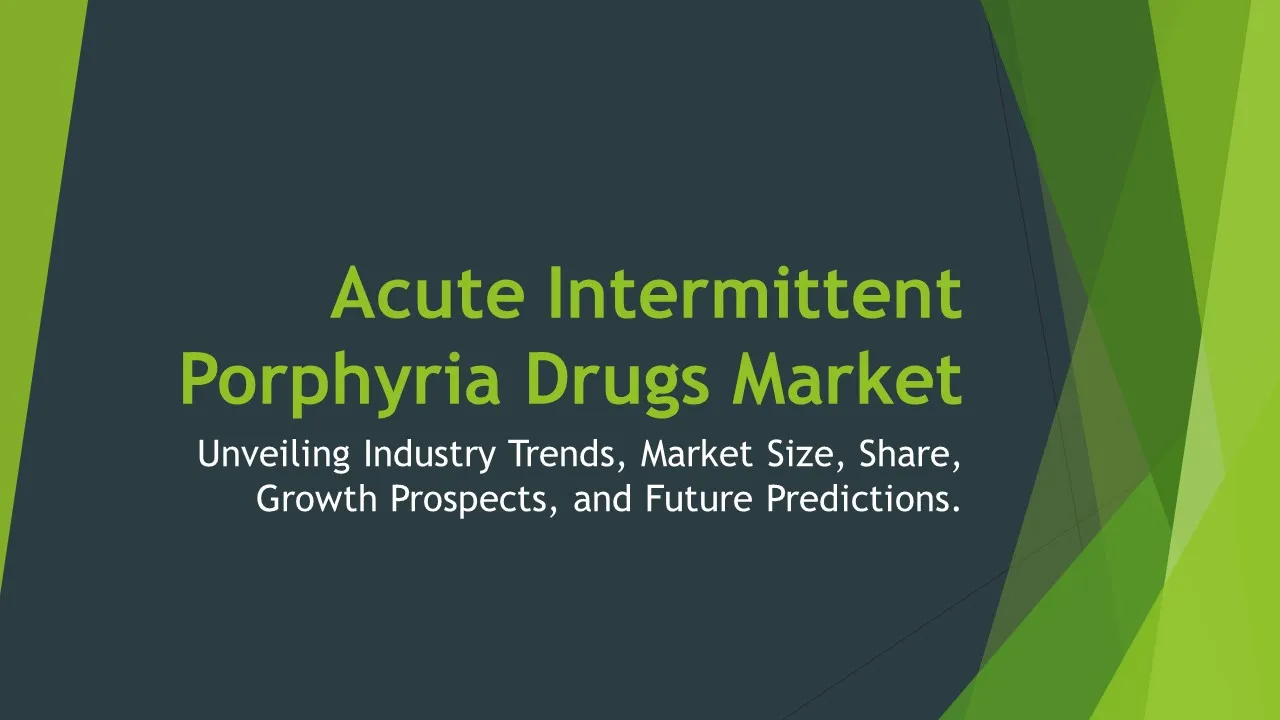Gastro Esophageal Reflux Disease GERD Drug Sales
Gastro Esophageal Reflux Disease (GERD) Drug Market Segments - by Drug Type (Proton Pump Inhibitors, H2 Receptor Antagonists, Antacids, Prokinetics, and Others), Route of Administration (Oral, Injectable), Distribution Channel (Hospital Pharmacies, Retail Pharmacies, Online Pharmacies), Sales Channel (Prescription-based, Over-the-counter), and Region (North America, Europe, Asia Pacific, Latin America, Middle East & Africa) - Global Industry Analysis, Growth, Share, Size, Trends, and Forecast 2025-2035
- Report Preview
- Table Of Content
- Segments
- Methodology
Gastro Esophageal Reflux Disease (GERD) Drug Sales Market Outlook
The global Gastro Esophageal Reflux Disease (GERD) drug market is projected to reach approximately USD 33.6 billion by 2035, growing at a compound annual growth rate (CAGR) of around 6.1% from 2025 to 2035. This growth can be attributed to an increase in the prevalence of GERD due to lifestyle changes, rising obesity rates, and aging populations, which contribute to a higher incidence of gastrointestinal disorders. Additionally, advancements in drug formulations and increased awareness of GERD among healthcare professionals and patients are propelling market growth. The ongoing research contributes to product innovation, with a strong pipeline of new and improved medications set to enter the market in the coming years. Furthermore, a growing trend of self-medication and the availability of various treatment options will augment the demand for GERD medications, fostering a robust market landscape.
Growth Factor of the Market
Several key factors are driving the growth of the GERD drug market. First, the increased prevalence of GERD has been a significant concern for both healthcare providers and patients. As modern lifestyles become increasingly sedentary and diets rich in fatty, spicy, and acidic foods have become more common, the incidence of GERD has risen, prompting a greater demand for effective medications. Additionally, an increase in the geriatric population, who are more susceptible to GERD, contributes to the market’s expansion. The pharmaceutical industry is also witnessing a surge in drug development, with novel therapies being introduced that target GERD more effectively than traditional treatments. Moreover, improved healthcare infrastructure and access to medications, especially in emerging markets, are expected to fuel growth as patients seek relief from GERD symptoms. Lastly, greater awareness and education about GERD, its symptoms, and available treatments have led to increased patient consultations with healthcare professionals, further stimulating market demand.
Key Highlights of the Market
- The GERD drug market is poised to expand at a CAGR of 6.1% from 2025 to 2035.
- Proton pump inhibitors (PPIs) dominate the drug type segment, accounting for a substantial market share.
- Oral administration is the preferred route for GERD medications due to its convenience.
- Prescription-based sales channels are expected to hold the largest share in the market.
- North America leads the market in terms of revenue, driven by high healthcare expenditure and awareness.
By Drug Type
Proton Pump Inhibitors:
Proton Pump Inhibitors (PPIs) are the most commonly prescribed medications for the treatment of GERD, accounting for a significant share of the market. They work by inhibiting the proton pump in the stomach lining, thereby reducing gastric acid production. This action not only alleviates symptoms but also promotes healing of the esophagus in those suffering from erosive esophagitis. The high efficacy and rapid symptom relief offered by PPIs have led to their growing popularity among both healthcare providers and patients. Leading brands such as Omeprazole and Esomeprazole have established strong market presence due to their effectiveness. However, the rising concerns regarding the long-term side effects associated with PPI usage, such as kidney disease and gastrointestinal infections, are pushing pharmaceutical companies to innovate newer formulations or alternative therapies.
H2 Receptor Antagonists:
H2 Receptor Antagonists, such as Ranitidine and Famotidine, are another prominent class of medications used in the management of GERD. These drugs function by blocking H2 receptors in the stomach lining, leading to decreased acid secretion. Although they are less potent than PPIs, H2 receptor antagonists are effective for mild to moderate GERD symptoms and are often used when patients cannot tolerate PPIs. The availability of over-the-counter versions of these medications has also increased their accessibility and usage among patients. However, the market for H2 receptor antagonists has seen some decline due to the increasing preference for PPIs, coupled with safety concerns that have arisen from certain recalls and regulatory scrutiny, which may impact their market performance in the future.
Antacids:
Antacids are widely used as a first-line treatment for GERD, providing rapid relief from symptoms by neutralizing stomach acid. These over-the-counter medications are typically composed of compounds like magnesium hydroxide, aluminum hydroxide, and calcium carbonate. They are favored for their quick action, making them a popular choice for patients seeking immediate relief from heartburn and indigestion. Despite their effectiveness in symptom management, antacids do not address the underlying causes of GERD and can lead to side effects such as constipation or diarrhea. The antacid segment remains robust, particularly among consumers looking for quick solutions, but it is generally viewed as a supplementary treatment rather than a long-term solution for GERD.
Prokinetics:
Prokinetics are medications that enhance gastrointestinal motility, helping to facilitate the movement of food through the digestive tract and reduce symptoms of GERD. These drugs work by increasing the tone of the lower esophageal sphincter and promoting gastric emptying, which can mitigate the regurgitation and reflux associated with GERD. While prokinetics can be effective for certain patient populations, their use is often limited due to side effects such as gastrointestinal discomfort and the potential for neurologic effects. As a result, they are typically reserved for patients who do not respond adequately to other treatments. This segment of the market is relatively smaller compared to PPIs and H2 receptor antagonists, yet it plays a crucial role in comprehensive GERD management for specific cases.
Others:
In addition to the above categories, there are several other treatments available for GERD, including alginate-based formulations and herbal remedies. Alginate-based medications work by forming a protective barrier on top of the gastric contents, reducing acid reflux into the esophagus. While these treatments may be effective for mild cases and are available over the counter, they do not replace the need for more standard pharmacological therapies. Moreover, the growing interest in natural remedies and lifestyle modifications has led to an increase in the use of herbal products and dietary changes as adjunct treatments. However, the market share for this segment remains relatively limited compared to conventional drug types, but it is gaining traction among patients seeking holistic approaches to managing their GERD symptoms.
By Route of Administration
Oral:
The oral route of administration is the most common method for administering GERD medications, primarily due to its ease of use and patient compliance. Oral medications, including tablets, capsules, or liquid forms, are easily accessible and widely available in both prescription and over-the-counter formats. This route allows for consistent dosing and is suitable for long-term management of GERD symptoms. Patients prefer oral medications as they can be taken at home without the need for hospital visits. Additionally, advancements in drug formulation have led to the development of extended-release oral medications, providing prolonged relief from GERD symptoms. The oral segment is expected to dominate the market, driven by the high prevalence of GERD and the preference for convenient therapies.
Injectable:
Injectable medications for GERD are less common compared to oral treatments and are typically reserved for specific cases where oral administration is not feasible or effective. For instance, injectable formulations may be utilized in hospital settings for managing severe cases of GERD or in patients who suffer from complications that necessitate immediate action. While the injectable route can provide rapid relief, the need for healthcare professionals to administer these treatments limits their widespread use. Consequently, the injectable segment holds a smaller share of the GERD drug market but remains an important option for patient care in critical situations or when oral intake is compromised.
By Distribution Channel
Hospital Pharmacies:
Hospital pharmacies play a critical role in the distribution of GERD medications, especially for patients requiring inpatient care or those undergoing surgical procedures related to gastrointestinal issues. In hospital settings, pharmacists are responsible for assessing patients’ medication regimens and providing appropriate therapies tailored to individual needs. These pharmacies often stock a wide range of GERD medications, including PPIs and stronger formulations not available over the counter. The hospital pharmacy segment has witnessed steady growth due to the increasing number of hospital admissions for GERD-related complications. As healthcare systems continue to evolve and prioritize patient safety and effective management of chronic conditions, hospital pharmacies will remain a key distribution channel for GERD medications.
Retail Pharmacies:
Retail pharmacies serve as a primary distribution channel for GERD medications, offering a diverse range of products that cater to consumers seeking both prescription and over-the-counter options. The convenience of retail pharmacies, which are often located in community settings, allows patients easy access to GERD medications without the need for a hospital visit. This segment has benefitted from the growing trend of self-medication, with patients increasingly opting for over-the-counter PPIs and H2 receptor antagonists to manage their symptoms. Furthermore, the rise of pharmacy chains and their emphasis on customer service has enhanced the shopping experience, contributing to increased sales in this channel. As the demand for GERD medications grows, retail pharmacies will continue to be a crucial player in the market's distribution landscape.
Online Pharmacies:
Online pharmacies have emerged as a significant distribution channel for GERD medications, providing patients with the convenience of purchasing medications from the comfort of their homes. The surge in e-commerce, coupled with the increasing reliance on digital platforms for healthcare needs, has led to the growth of this segment. Online pharmacies often offer competitive pricing and the advantage of discreet transactions for patients seeking treatments for sensitive conditions like GERD. However, the market faces challenges related to regulatory compliance and the authenticity of medications, which can raise concerns among consumers. Despite these challenges, the online pharmacy segment is expected to continue to grow, driven by advancements in digital healthcare and an increasing acceptance of telehealth services.
By Sales Channel
Prescription-based:
Prescription-based sales channels dominate the GERD drug market, primarily due to the need for professional assessment and tailored treatment plans for patients with moderate to severe GERD symptoms. Prescription medications, particularly PPIs, are often recommended by healthcare providers as they can offer more robust and targeted relief compared to over-the-counter alternatives. The prescription-based segment is closely tied to healthcare providers' growing awareness of GERD and the importance of managing the condition effectively. Furthermore, as more healthcare professionals recognize the complexities of GERD treatment, they are likely to prescribe medications more frequently, enhancing the market's growth potential in this segment.
Over-the-counter:
Over-the-counter (OTC) sales channels have gained significant traction in the GERD drug market due to the rising trend of self-medication among consumers. OTC medications, including antacids and low-dose PPIs, offer immediate relief for patients experiencing mild symptoms without the need for a healthcare provider's prescription. This segment is particularly attractive to consumers due to the convenience and accessibility of purchasing medications at retail pharmacies and online platforms. Furthermore, the growing awareness about GERD and the availability of effective OTC options have encouraged patients to take a proactive approach to manage their symptoms. As the preference for self-care continues to rise, the OTC segment is expected to witness sustained growth in the coming years.
By Region
North America holds the largest share of the GERD drug market, driven by a high prevalence of the condition, coupled with advanced healthcare infrastructure and a well-established pharmaceutical industry. The region's high healthcare expenditure contributes to the availability and accessibility of a wide range of GERD medications. It is estimated that the North American GERD market will reach USD 16.5 billion by 2035, growing at a CAGR of 6.3% during the forecast period. The increasing awareness of GERD and its management options further supports the growth of this segment, as more patients seek treatment options to alleviate their symptoms. Moreover, a focus on improving patient outcomes and quality of life drives healthcare providers to prescribe effective therapies.
Europe is the second-largest region in the GERD drug market, expected to reach approximately USD 9 billion by 2035, with a CAGR of 5.6%. The growing geriatric population and changing lifestyles are significant contributors to the increasing prevalence of GERD in this region. Additionally, regulatory support for drug innovation and the presence of key market players enhance the competitive landscape, leading to the introduction of novel therapies. The increasing acceptance of telehealth services and the expansion of online pharmacies are also expected to boost the accessibility of GERD medications in Europe. As healthcare systems evolve across the continent, the demand for effective GERD management will likely rise, contributing to market growth.
Opportunities
The GERD drug market presents numerous opportunities for growth as healthcare providers and pharmaceutical companies address the rising demand for effective management techniques. One of the most promising opportunities lies in research and development efforts aimed at discovering innovative therapies that target the underlying causes of GERD, rather than just alleviating symptoms. Advances in drug formulation technology have the potential to yield longer-lasting, more effective medications that can significantly improve patient quality of life. Additionally, the integration of personalized medicine approaches, where treatments are tailored to individual patient profiles, represents a significant opportunity for pharmaceutical companies to differentiate their products and enhance treatment outcomes.
Moreover, the increasing awareness of GERD and its associated risks presents a considerable opportunity for industry stakeholders. Educational campaigns aimed at both healthcare professionals and patients can promote earlier diagnosis and treatment, leading to an overall reduction in the burden of the disease. The expansion of telehealth services also opens new avenues for patient engagement and medication management, particularly for those with limited access to traditional healthcare settings. Furthermore, the growth of e-commerce platforms provides a convenient means for patients to access medications, thus enhancing market reach and improving patient adherence. By capitalizing on these opportunities, companies can position themselves for long-term success in the evolving GERD drug market.
Threats
Despite the growth prospects of the GERD drug market, there are several threats that may hinder its expansion. One significant threat is the increasing regulatory scrutiny surrounding the safety and efficacy of certain GERD medications, particularly PPIs. Concerns about the long-term use of these drugs and their potential side effects, such as kidney damage, gastrointestinal infections, and cardiovascular risks, have led to heightened vigilance from regulatory agencies. Such scrutiny can impact the approval process for new drugs, as well as influence physician prescribing practices, ultimately affecting market dynamics. Additionally, the potential for market saturation, especially with the availability of numerous generic options, can put downward pressure on prices and profit margins for pharmaceutical companies.
Another threat to the GERD drug market is the rising prevalence of alternative and natural treatment options. Many patients are turning to lifestyle changes, dietary modifications, and herbal remedies as alternatives to conventional medications. This shift in consumer behavior could reduce demand for traditional pharmaceutical treatments, particularly among patients seeking holistic approaches to healthcare. Furthermore, the competitive landscape is becoming increasingly crowded, with new entrants and startups emerging in the market, creating challenges for established players to maintain their market share. To address these threats, companies must focus on continuous innovation, ensuring the development of effective and safe products that meet the evolving needs of patients and healthcare providers.
Competitor Outlook
- Pfizer Inc.
- GlaxoSmithKline plc
- AbbVie Inc.
- Sanofi S.A.
- Takeda Pharmaceutical Company Limited
- Amgen Inc.
- Teva Pharmaceutical Industries Ltd.
- Mylan N.V.
- Johnson & Johnson
- Merck & Co., Inc.
- AstraZeneca plc
- Hikma Pharmaceuticals PLC
- Dr. Reddy's Laboratories Ltd.
- Gilead Sciences, Inc.
- Bristol-Myers Squibb Company
The competitive landscape of the GERD drug market is characterized by the presence of several well-established pharmaceutical companies, each vying for market share through innovative product offerings and strategic collaborations. Large multinational corporations, such as Pfizer, AbbVie, and Johnson & Johnson, dominate the market with their extensive portfolios of GERD medications, including blockbuster brands that have a strong presence in both prescription and over-the-counter segments. These companies invest heavily in research and development to maintain their competitive edge and respond to the evolving needs of patients and healthcare providers. Furthermore, strategic partnerships and collaborations with other pharmaceutical firms and research institutions are common in this landscape, as they enable companies to leverage complementary strengths and enhance their product offerings.
Smaller biotech and pharmaceutical companies also play a critical role in the GERD drug market, often focusing on niche areas of treatment or innovative drug formulations. These companies are more agile and can quickly adapt to changing market dynamics and emerging patient needs. For instance, companies like Gilead Sciences and Dr. Reddy’s Laboratories are actively engaged in developing novel therapies and generics that cater to the growing patient base seeking effective GERD management. Additionally, the increasing trend of digital health and telemedicine has led some companies to explore non-traditional channels for medication delivery and patient engagement, reflecting a shift in the competitive landscape toward more patient-centric approaches.
Among the key players in the market, Pfizer Inc. stands out with its robust portfolio of GERD medications, including the popular proton pump inhibitor, Omeprazole. The company has maintained a strong market presence through continuous innovation and extensive marketing efforts. Similarly, AbbVie Inc. has made significant strides in the GERD market by developing effective treatment options that address various aspects of the disease. The company’s commitment to research and patient education has positioned it as a trusted name in GERD management. Additionally, Takeda Pharmaceutical Company Limited is recognized for its strong focus on gastrointestinal health and has developed a range of therapies that cater to GERD patients, contributing to its competitive advantage in the market.
1 Appendix
- 1.1 List of Tables
- 1.2 List of Figures
2 Introduction
- 2.1 Market Definition
- 2.2 Scope of the Report
- 2.3 Study Assumptions
- 2.4 Base Currency & Forecast Periods
3 Market Dynamics
- 3.1 Market Growth Factors
- 3.2 Economic & Global Events
- 3.3 Innovation Trends
- 3.4 Supply Chain Analysis
4 Consumer Behavior
- 4.1 Market Trends
- 4.2 Pricing Analysis
- 4.3 Buyer Insights
5 Key Player Profiles
- 5.1 Amgen Inc.
- 5.1.1 Business Overview
- 5.1.2 Products & Services
- 5.1.3 Financials
- 5.1.4 Recent Developments
- 5.1.5 SWOT Analysis
- 5.2 Mylan N.V.
- 5.2.1 Business Overview
- 5.2.2 Products & Services
- 5.2.3 Financials
- 5.2.4 Recent Developments
- 5.2.5 SWOT Analysis
- 5.3 AbbVie Inc.
- 5.3.1 Business Overview
- 5.3.2 Products & Services
- 5.3.3 Financials
- 5.3.4 Recent Developments
- 5.3.5 SWOT Analysis
- 5.4 Pfizer Inc.
- 5.4.1 Business Overview
- 5.4.2 Products & Services
- 5.4.3 Financials
- 5.4.4 Recent Developments
- 5.4.5 SWOT Analysis
- 5.5 Sanofi S.A.
- 5.5.1 Business Overview
- 5.5.2 Products & Services
- 5.5.3 Financials
- 5.5.4 Recent Developments
- 5.5.5 SWOT Analysis
- 5.6 AstraZeneca plc
- 5.6.1 Business Overview
- 5.6.2 Products & Services
- 5.6.3 Financials
- 5.6.4 Recent Developments
- 5.6.5 SWOT Analysis
- 5.7 Johnson & Johnson
- 5.7.1 Business Overview
- 5.7.2 Products & Services
- 5.7.3 Financials
- 5.7.4 Recent Developments
- 5.7.5 SWOT Analysis
- 5.8 Merck & Co., Inc.
- 5.8.1 Business Overview
- 5.8.2 Products & Services
- 5.8.3 Financials
- 5.8.4 Recent Developments
- 5.8.5 SWOT Analysis
- 5.9 GlaxoSmithKline plc
- 5.9.1 Business Overview
- 5.9.2 Products & Services
- 5.9.3 Financials
- 5.9.4 Recent Developments
- 5.9.5 SWOT Analysis
- 5.10 Gilead Sciences, Inc.
- 5.10.1 Business Overview
- 5.10.2 Products & Services
- 5.10.3 Financials
- 5.10.4 Recent Developments
- 5.10.5 SWOT Analysis
- 5.11 Hikma Pharmaceuticals PLC
- 5.11.1 Business Overview
- 5.11.2 Products & Services
- 5.11.3 Financials
- 5.11.4 Recent Developments
- 5.11.5 SWOT Analysis
- 5.12 Bristol-Myers Squibb Company
- 5.12.1 Business Overview
- 5.12.2 Products & Services
- 5.12.3 Financials
- 5.12.4 Recent Developments
- 5.12.5 SWOT Analysis
- 5.13 Dr. Reddy's Laboratories Ltd.
- 5.13.1 Business Overview
- 5.13.2 Products & Services
- 5.13.3 Financials
- 5.13.4 Recent Developments
- 5.13.5 SWOT Analysis
- 5.14 Teva Pharmaceutical Industries Ltd.
- 5.14.1 Business Overview
- 5.14.2 Products & Services
- 5.14.3 Financials
- 5.14.4 Recent Developments
- 5.14.5 SWOT Analysis
- 5.15 Takeda Pharmaceutical Company Limited
- 5.15.1 Business Overview
- 5.15.2 Products & Services
- 5.15.3 Financials
- 5.15.4 Recent Developments
- 5.15.5 SWOT Analysis
- 5.1 Amgen Inc.
6 Market Segmentation
- 6.1 Gastro Esophageal Reflux Disease GERD Drug Sales Market, By Drug Type
- 6.1.1 Proton Pump Inhibitors
- 6.1.2 H2 Receptor Antagonists
- 6.1.3 Antacids
- 6.1.4 Prokinetics
- 6.1.5 Others
- 6.2 Gastro Esophageal Reflux Disease GERD Drug Sales Market, By Sales Channel
- 6.2.1 Prescription-based
- 6.2.2 Over-the-counter
- 6.3 Gastro Esophageal Reflux Disease GERD Drug Sales Market, By Distribution Channel
- 6.3.1 Hospital Pharmacies
- 6.3.2 Retail Pharmacies
- 6.3.3 Online Pharmacies
- 6.4 Gastro Esophageal Reflux Disease GERD Drug Sales Market, By Route of Administration
- 6.4.1 Oral
- 6.4.2 Injectable
- 6.1 Gastro Esophageal Reflux Disease GERD Drug Sales Market, By Drug Type
7 Competitive Analysis
- 7.1 Key Player Comparison
- 7.2 Market Share Analysis
- 7.3 Investment Trends
- 7.4 SWOT Analysis
8 Research Methodology
- 8.1 Analysis Design
- 8.2 Research Phases
- 8.3 Study Timeline
9 Future Market Outlook
- 9.1 Growth Forecast
- 9.2 Market Evolution
10 Geographical Overview
- 10.1 Europe - Market Analysis
- 10.1.1 By Country
- 10.1.1.1 UK
- 10.1.1.2 France
- 10.1.1.3 Germany
- 10.1.1.4 Spain
- 10.1.1.5 Italy
- 10.1.1 By Country
- 10.2 Asia Pacific - Market Analysis
- 10.2.1 By Country
- 10.2.1.1 India
- 10.2.1.2 China
- 10.2.1.3 Japan
- 10.2.1.4 South Korea
- 10.2.1 By Country
- 10.3 Latin America - Market Analysis
- 10.3.1 By Country
- 10.3.1.1 Brazil
- 10.3.1.2 Argentina
- 10.3.1.3 Mexico
- 10.3.1 By Country
- 10.4 North America - Market Analysis
- 10.4.1 By Country
- 10.4.1.1 USA
- 10.4.1.2 Canada
- 10.4.1 By Country
- 10.5 Middle East & Africa - Market Analysis
- 10.5.1 By Country
- 10.5.1.1 Middle East
- 10.5.1.2 Africa
- 10.5.1 By Country
- 10.6 Gastro Esophageal Reflux Disease GERD Drug Sales Market by Region
- 10.1 Europe - Market Analysis
11 Global Economic Factors
- 11.1 Inflation Impact
- 11.2 Trade Policies
12 Technology & Innovation
- 12.1 Emerging Technologies
- 12.2 AI & Digital Trends
- 12.3 Patent Research
13 Investment & Market Growth
- 13.1 Funding Trends
- 13.2 Future Market Projections
14 Market Overview & Key Insights
- 14.1 Executive Summary
- 14.2 Key Trends
- 14.3 Market Challenges
- 14.4 Regulatory Landscape
Segments Analyzed in the Report
The global Gastro Esophageal Reflux Disease GERD Drug Sales market is categorized based on
By Drug Type
- Proton Pump Inhibitors
- H2 Receptor Antagonists
- Antacids
- Prokinetics
- Others
By Route of Administration
- Oral
- Injectable
By Distribution Channel
- Hospital Pharmacies
- Retail Pharmacies
- Online Pharmacies
By Sales Channel
- Prescription-based
- Over-the-counter
By Region
- North America
- Europe
- Asia Pacific
- Latin America
- Middle East & Africa
Key Players
- Pfizer Inc.
- GlaxoSmithKline plc
- AbbVie Inc.
- Sanofi S.A.
- Takeda Pharmaceutical Company Limited
- Amgen Inc.
- Teva Pharmaceutical Industries Ltd.
- Mylan N.V.
- Johnson & Johnson
- Merck & Co., Inc.
- AstraZeneca plc
- Hikma Pharmaceuticals PLC
- Dr. Reddy's Laboratories Ltd.
- Gilead Sciences, Inc.
- Bristol-Myers Squibb Company
- Publish Date : Jan 21 ,2025
- Report ID : PH-66848
- No. Of Pages : 100
- Format : |
- Ratings : 4.5 (110 Reviews)









